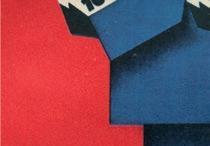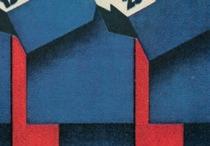RUTH ARTMONSKY
The bombing in November 1940 of 44 Leicester Square, offices of The Studio Ltd..
INTRODUCTION
The founding of The Studio Ltd., was fuelled by a mission – the idea that if countries learned about the cultures of other countries through visuals, rather than language, there would be better understanding, and resulting harmony. Charles Holme, retired from his career of trading across the Far East, and, with this charming, but naïve, notion in mind, aided by the capital he had accumulated, was able to set up a publishing business to launch an art magazine intent to draw its features and illustrations from across the world.
The Studio Ltd. started life in Covent Garden, in Henrietta Street, but soon settled into 44 Leicester Square, where it was to remain for some forty years until bombed out in the Blitz, whereon it moved back across the Charing Cross Road to Chandos Place.
The first issue of The Studio magazine was in 1893, and with this under his belt, Charles got the publishing bug. Not long afterwards, he put out an associated annual, The Studio Yearbook of Decorative Art and, what he termed Studio ‘Specials’, books on art and artefacts not adequately covered in his magazine or annual.
When Charles’s son Geoffrey took over the reins, on his father’s retirement in 1919 (Charles died in 1923), he had already worked in the company for some years, and, sharing his father’s interests in the arts, both ‘fine’ and ‘applied’, he rapidly expanded The Studio Ltd. both by building on his father’s publications, and by acquisitions, extending its range to include commercial art, and, eventually, industrial design.
Frank Brangwyn (1867–1956) poster for The Studio, 1899.
In their turn, Geoffrey’s sons, Rathbone and Bryan, joined the company. It was, perhaps, inevitable, that the missionary zeal of the founder was to get somewhat diluted over the generations, but, nevertheless, the grandsons were to play their parts, Rathbone in London and Bryan in New York, when an office was set up, launching the company’s American offshoot, The Studio Publications Inc.
The Holme family, with appropriate help, was, for some sixty years, to steer The Studio Ltd through two world wars and the poor economic climes immediately after WWI, and in the late 1920s into the ‘30s. It was to become the largest publisher of books and magazines on art and design in Britain in the first half of the 20th century.
The aftermath of Geoffrey’s unexpected death, in 1954, with consequential death duties, forced the sale of The Studio Ltd and its publications. Passed from one new owner to another, some of the publications had an extended life, but the company itself, as an entity, run by the Holme family, was at an end.
Although the company’s records up to WWII were destroyed in the bombing, much of its history can be derived from its publications themselves, telling of the interests, attitudes and policy of the proprietors.
The cover of an early issue of The Studio magazine from Henrietta Street, October, 1895.
THE STUDIO & THE STUDIO SPECIALS
In 1968, Studio International, claiming to be of direct descent of The Studio brought out a special issue celebrating 75 Years of The Studio . As to be expected it overflowed with praise from the great and the good along the lines of Herbert Read’s contribution –
any adequate history of the modern movement in art will have to take account of the significant part played by The Studio.
The less obsequious Kenneth Clark and Victor Pasmore threw doubts on such a claim; Clark wrote –
Not all the works of art produced in The Studio were equally distinguished; much of the painting was mediocre and the applied design was painfully artistic.
And Pasmore went even further, recalling how, for him, The Studio faded into insignificance when he arrived in London and became aware of what actually was avant garde. The Studio throughout its existence, and, in retrospect, was to attract both fans and detractors.
glossy magazine. It was perhaps an overoptimistic sophisticated revamp at a time when Fleet Street was in turmoil. The December issue, in 1959, announced the journals’ closure.
The editors of Commercial Art , under its various titles, claimed that during its lifetime it was the only industrial design magazine in Britain until the Council of Industrial Design brought out its Design in 1949. In its time it had helped to shift ‘design’ from mere ornamentation at the end of production to a more integrated role at its start; it had championed new young designers and had challenged parochialism by its international features. It became essential reading for designers and their commissioners, at the time, and remains a major source of information for those interested in the history of design in Britain in the fi rst half of the 20th century.
As The Studio spawned its own annual, with its Yearbook of Decorative Art, so Commercial Art was to have, in turn, its own annual, Modern Publicity . Some kind of annual related to the monthly seems to have been being considered not long after Commercial Art had been launched. In 1924 the company published a one-off, ‘Posters and their designers’. Geoffrey reported that this was so well received that it was decided to bring out a similar book the year after, and in 1925 another similar one off, Art & Publicity was produced. Geoff rey, with confi dence, announced that there would definitely be an annual thenceforth ‘illustrating the most recent developments in the association of Art & Publicity . In all there
above Cover of Modern Publicity, The Studio Ltd.,1930.
opposite Early introduction to readers of international advertising; Jyldis Tobacco by Joseph Binder, 1928 and Sools Hat Company by A. M. Cassandre, 1925.
A selection of covers, 1961–63, designed by David Pelham.
It is, perhaps paradoxical, that The Studio magazine, the publication giving the company its name, and best remembered when the company is mentioned ( sometimes the only publication thought to have been published by the company) was, perhaps, the least satisfactory. Possibly from a desire to be even-handed in what was offered to its readership, possibly from the aesthetic tastes of family members, The Studio Ltd. in the area of ‘fine’ art, tended to avoid the controversial, the radical; its readers would have found plenty that was ‘pleasant’, but altogether less that would have set their hearts on fire or influenced the course of their lives, that some of The Studio Ltd.’s other publications could well have done. Yet it was The Studio, of the two monthlies and two annuals, that was to survive the longest.
After the death of Geoff rey Holme the publications were sold on, and on, and on again – from one short-lived optimistic publisher to the next; from the Hulton Press, to the Longacre Press, to Cory, Adams and Mackay through to the National Magazine Co. But with such dedicated editors as G.S. Whittet, Peter Townsend ( and his contemporary art enthusiastic assistants ) , and Richard Cork, along with such confi dent designers as David Pelham, who was later to become Art Director of Penguin Books, the somewhat staid The Studio of the Holmes was to morph into a truly sophisticated, international journal of contemporary art.
Nevertheless when Sims Reed, in 1978, provided a listing of what The Studio Ltd. had published over the years, it neatly summed up what the Holme’s family had achieved –


































































